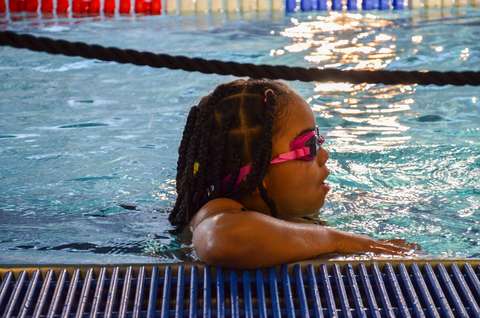Knowing how to swim is a vital skill – Skills strengthen during the study path
Knowing how to swim is not important just for fun: it is a civic skill that can save your life. Finnish Swimming Teaching and Lifesaving Federation (FSL) maintains estimates on deaths by drowning in Finland. In 2025, more people had drowned by the end of August than in all of 2024. Drowning is still one of the most common causes of accidental death in children. Our goal is to ensure that each child and young person gets the opportunity to learn how to swim and operate safely in and around water.
The Western Uusimaa Police Department reminds that an adult accompanying a child is responsible for the child’s safety any time they go swimming - be it at an indoor or outdoor swimming pool or a beach, regardless of whether life guards are present or not. While the child is in water, the adult should stay close by. If an adult responsible for a child leaves the child alone in a situation where the child’s life is in danger, the police assesses if the incident fulfils the criteria of an offence and, when needed, initiate a pre-trial investigation.
In Espoo, the Sports and Exercise Unit and basic education providers are responsible for organising swimming instruction. The goal is that by fourth grade, a child is able to swim continuously for at least 100 metres. However, the end goal is to ensure that children can swim without a break for at least 200 metres, which is the definition of being able to swim in the Nordic countries.
Future first-graders have the chance to participate in two swimming school lessons in the summer before starting school. At pre-school age, it is not necessary for a child to know how to swim yet. Instead, the goal of the swimming lessons is for children to get used to being in water, practise dipping in, blow bubbles, and get to know different swimming aids through stories and games. The objective is to better prepare the child to participate in swimming lessons with the rest of the class when swimming instruction starts in first grade.
Swimming school is organised for pupils in grades 1–4 four times a year at each grade. This means that by the end of fourth grade, each pupil in Espoo should have been to a total of 18 swimming classes. Schools offer additional lessons for pupils who have not reached the required skills during regular lessons.
‘As swimming instructors for schoolchildren, we want you to know that four swimming lessons that you take in school are not enough for a child to learn how to swim. Because of this, it is important that guardians support the development of the child’s swimming skills and take responsibility for teaching their children how to swim. If your child is uncomfortable being in water, they need more practice getting used to it than their more daring peers,’ say swimming instructors Anna Jauhonen, Noora Nelin and Teemu Peteri.
They also point out that if you accidentally fall into water, you will not be wearing a snorkelling mask or a nose clip. Therefore, it is best to wear normal swimming goggles that only cover the eyes and not the nose when swimming. Knowing how to swim means the ability to survive and act calmly and sensibly in water, even in unexpected situations.
Espoo is committed to promoting safety in water and equal opportunities in learning how to swim. For any questions about swimming instruction, the pupil or their guardian should get in touch with the class teacher. Every child deserves an opportunity to learn this skill that could save their life - and offer the joys of swimming for the rest of their lives.
